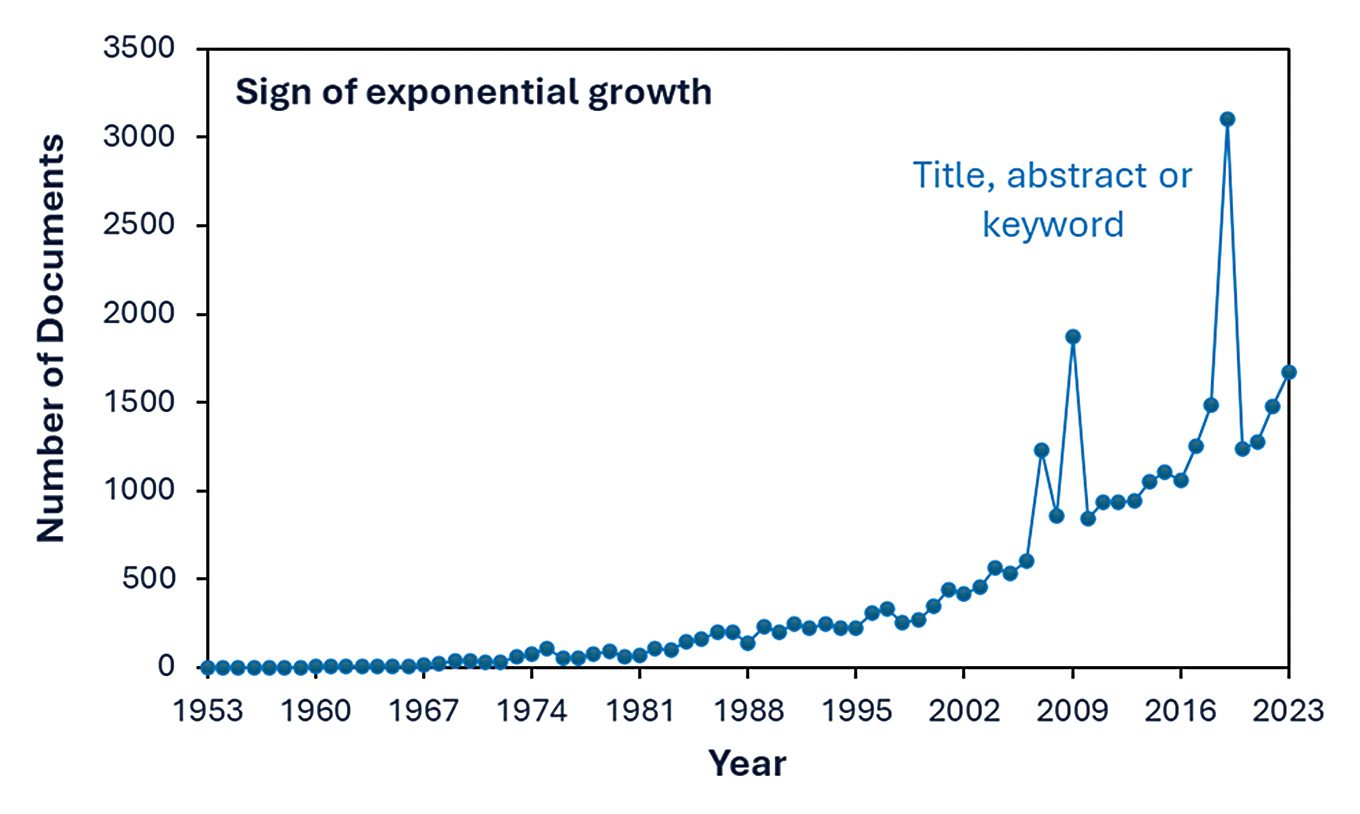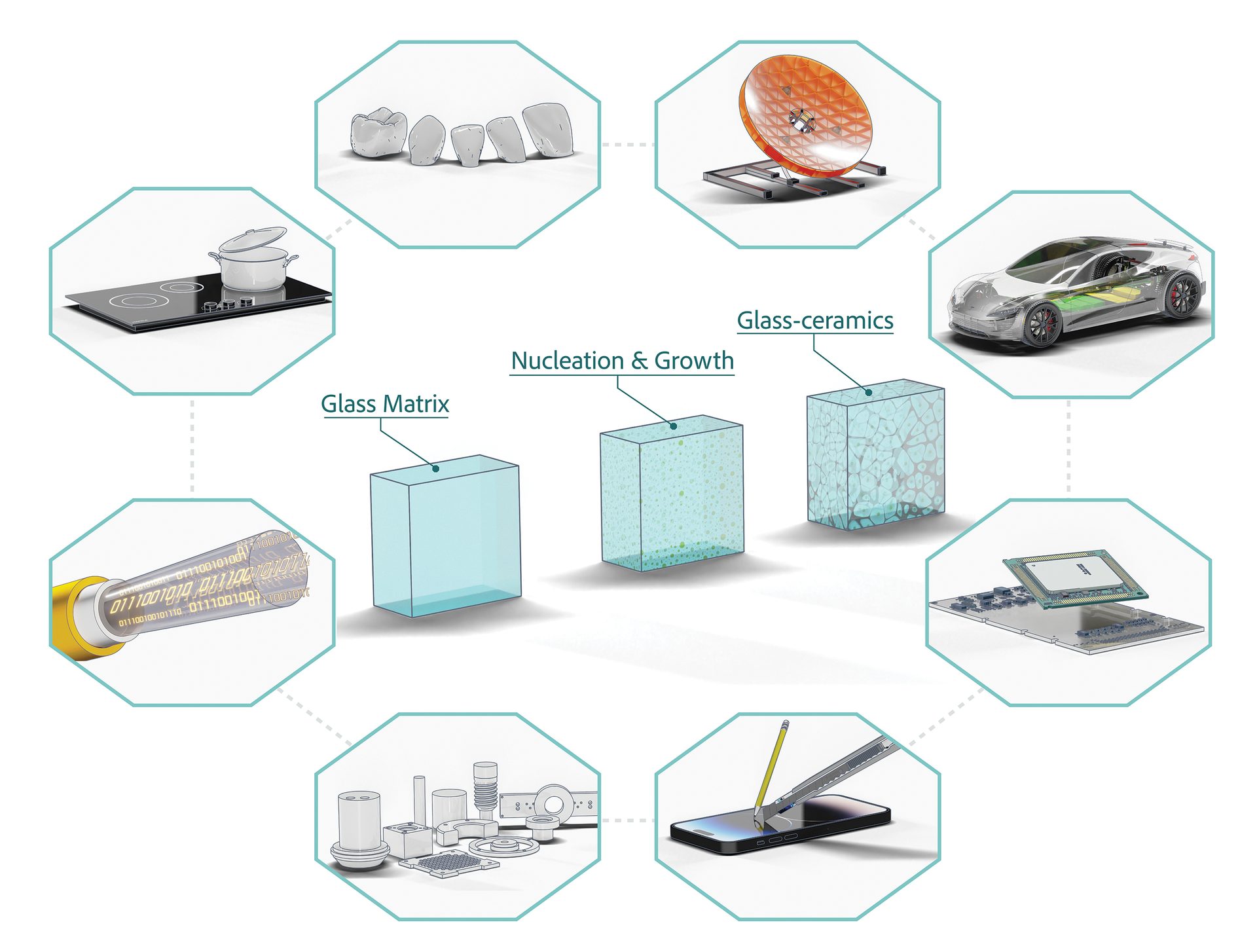bulletin | feature
Isaak Il’ich Kitaigorodskii
…and the evolution of glass-ceramics
By Maziar Montazerian

Isaak Il’ich Kitaigorodskii’s developments in glass coloring processes allowed development of the ruby stars of the Moscow Kremlin.
Headshot credit: Vladimir Sigaev, Department of Glass and Sitalls at D. Mendeleev University of Chemical Technology of Russia
Russian scientist Isaak Il’ich Kitaigorodskii played a central role in shaping the field of glass and glass-ceramic development, significantly expanding potential applications of these novel materials.
Our well-known glass-ceramics textbooks by McMillan,1 Hlaváč,2 and Höland & Beall3 highlight the history of a key discovery: In 1739, French chemist René-Antoine Ferchault de Réaumur became the first known person to produce partially crystallized glass (the so-called Réaumur porcelain).
Réaumur achieved this feat by heat treating soda-lime-silica glass bottles in a bed of gypsum and sand for several days. While successful in converting the glass into a polycrystalline porcelain-like material, his method resulted in a product prone to sagging, deformation, and low strength due to uncontrolled surface crystallization.
ADVERTISEMENT
More than two centuries later, Voldán used differential thermal analysis to study crystallization in fused basalt (1955 and 1957) while Lungu and Popescu investigated the crystallization of fluoride-nucleated glasses with good mechanical properties (1955).2 However, the research credited as being the main impulse for developing glass-ceramics came in 1953, when Stanley D. Stookey of Corning Glass Works (now Corning Incorporated) accidentally crystallized Fotoform®, a photosensitive glass containing dispersed silver nanoparticles.4 The resulting glass-ceramic, which Stookey and his colleagues at Corning developed into the first patented glass-ceramic Fotoceram®, contained lithium disilicate (Li2Si2O5) and quartz (SiO2) as its main crystalline phases.
In the 70 years since that discovery, the field of glass-ceramics experienced considerable growth, as evidenced by the increasing use of that term and related words in published documents (Figure 1). Their appealing properties, which combine glass (optical transparency and translucency) and ceramic (strength and toughness) phase characteristics,5 led to the commercialization and use of these material across several industries, including healthcare, kitchenware, aerospace, electronics, architecture, energy, and waste management, among others (Figure 2).

Figure 1. Number of published documents per year extracted from the Scopus database that contain the words “glass-ceramic” OR “glass ceramic” OR “vitroceramic” OR “sitall” OR “pyroceram” OR “vitrokeram” OR “devitroceram” in the article’s title, abstract, or keywords.
Credit: Montazerian

Figure 2. (Center) Illustration of the glass-ceramic development process, which involves the heat-controlled nucleation and growth of crystals within a parent glass matrix. (Surrounding hexagons) Some general applications of glass-ceramics, from clockwise top left: dental prostheses, telescope mirrors, solid-state batteries for electric vehicles, electronic substrates, scratch-resistant and tough displays, machinable mica glass-ceramics for aerospace and other applications, glass-ceramic fibers for fiber amplifiers and lasers, and kitchenware.
Credit: Montazerian
As with many great scientific discoveries, there is more to the story of glass-ceramics development than just the narrative presented in the textbooks. Astbury’s 1965 Nature article “Glass-ceramics: A new technology?” emphasizes that some concurrent glass-ceramics developments were done in the Union of Soviet Socialist Republics.6 Now, further study of recently translated Russian articles have revealed the significant contributions of Isaak Il’ich Kitaigorodskii (1888–1965),7 professor at D. Mendeleev Institute of Chemical Technology in Moscow (now D. Mendeleev University of Chemical Technology of Russia).
From 1933 until his death, Kitaigorodskii established and served as a faculty member in the university’s glass technology department, which was the first department focused on glass technology in the nation. During his more than 30 years as department head, he devoted his efforts, time, and ability to making the department a prominent scientific and educational center in the field of glass science and technology.8,9
Among Kitaigorodskii’s scientific pursuits, discussed in more detail below, his contributions to glass-ceramic technology were remarkable. Between 1940 and 1965, he along with colleagues and students at Moscow D. Mendeleev Institute of Chemical Technology pioneered the development of “stone glass,” or a glassy matrix mixed and reinforced with secondary crystalline phases, notably corundum or microlite. Recognizing the benefits of crystalline phases within a glassy matrix, Kitaigorodskii expanded his research to pursue the development of “sitalls,” or glass-ceramics.10 These materials, unlike stone glass, result from controlled crystallization of a glass rather than the manual addition of secondary crystalline phases. Kitaigorodskii’s research on sitalls in the 1950s and 1960s paralleled similar efforts in the United States on glass-ceramics.
To advance the use of sitalls in application, Kitaigorodskii first focused on developing a fundamental understanding of the material, specifically the theory of crystallization by nucleation agents and glass reinforcement by secondary phase.9,11 His theoretical advancements, comprehensive empirical evidence, and rigorous administrative efforts resulted in notable achievements. In 1959, the Avtosteklo facility in Konstantinov successfully manufactured key components for supersonic aircraft using sitalls, which had low thermal expansion and excellent dielectric properties. These components were developed under industrial prototype circumstances. The world’s first production line for sheet glass-ceramic material, made from steel furnace slag known as slag sitall, was established at the same plant in 1966.
In 1963, Kitaigorodskii and his colleague N. M. Pavlushkin, who became the department head of glass technology at D. Mendeleev Institute of Chemical Technology after Kitaigorodskii stepped down, were awarded the Lenin Prize for their work on sitall.7 The Lenin Prize was one of the most prestigious awards of the Soviet Union for accomplishments relating to science, literature, arts, architecture, and technology.
In addition to his work on stone glass and sitalls, Kitaigorodskii helped advance the glass manufacturing industry in Russia. For instance, the ruby stars of the Moscow Kremlin were created based on his developments in glass coloring processes, and he played a key role in establishing the domestic production of light bulbs.12 He invented other novel forms of glass as well, notably foam glasses.
Kitaigorodskii’s extensive research resulted in more than 300 publications and made him the recipient of multiple accolades. Furthermore, he made significant contributions to education through writing textbooks and supervising students.
Knowing that it typically takes at least five years of research (often longer) to develop a product from idea conception to industrialization (1954–1959), Kitaigorodskii appears to have begun his work on sitalls around the same time as Stookey’s discovery of glass-ceramics in 1953. The parallel work of both these researchers indicates a purposeful push for glass-ceramic development. It is only now, though, that Kitaigorodskii’s contributions to the research and potential applications of glass-ceramics are being recognized more broadly outside his home country.
Learn more about Kitaigorodskii and his contributions to glass science and technology in Reference 7.
Acknowledgments:
The author expresses gratitude to John Mauro, Vladimir Fokin, Eduardo Bellini Ferreira, and Vladimir Sigaev for their valuable resources and insightful discussions.
About the author:
Maziar Montazerian is assistant research professor of materials science and engineering at The Pennsylvania State University. Contact Montazerian.
